Plant your spring bulbs the way mother nature does, by naturalizing!
Naturalizing Bulbs Organically
When bulbs’ brief but glorious season is upon us, we want to revel in it. Naturalized planting lets us do just that. Naturalizing is planting informal “drifts” of dozens or even hundreds of bulbs among other plants. With time, the bulbs multiply and spread into a spectacular display of flowers with minimal work and minimal damage to your budget. Lightly wooded areas, lawns, and rock gardens are the most popular places for naturalizing.
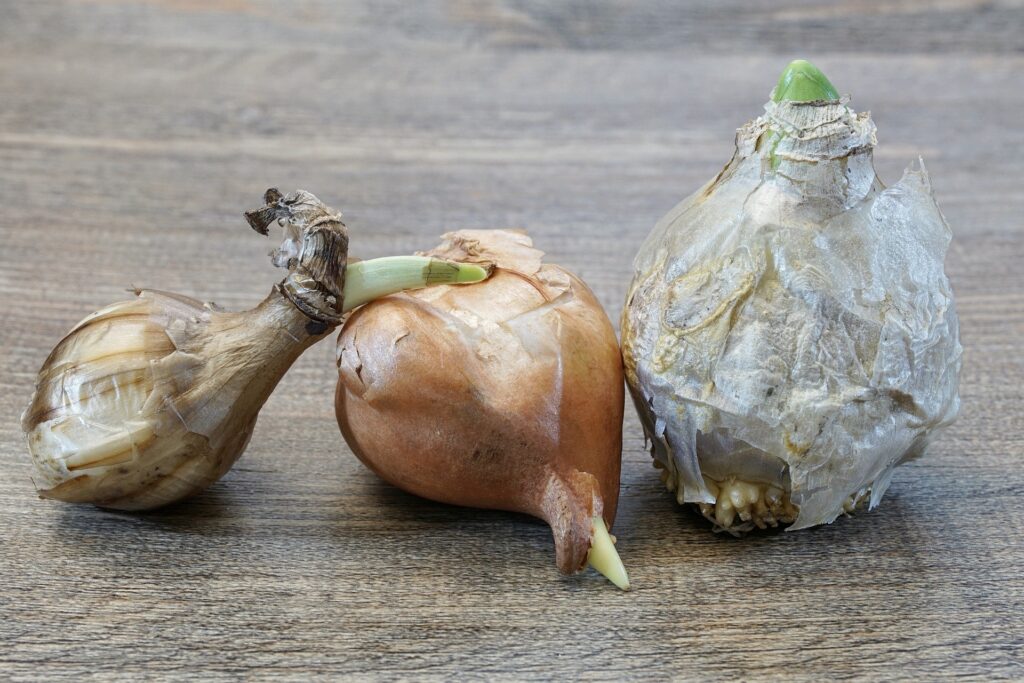
Spots for naturalizing
In lawns
As more gardeners embrace naturalistic gardens, they’ve embraced naturalizing bulbs: one emerging trend is sweeps of color in the lawn, especially of blue flowers.
Lawns have become the spot of choice for naturalizing many smaller bulbs including crocuses, scillas, Ipheion, Spanish bluebells, grape hyacinths, and snowdrops. (For the sake of brevity, all the plants in this article are referred to as bulbs, although some, such as crocuses, are botanically corms, tubers, or rhizomes.) More homeowners are planting drought-tolerant turf grasses that green up later in the season, and they find that their lawns cry out for a little early-season color in the form of masses of bulbs.
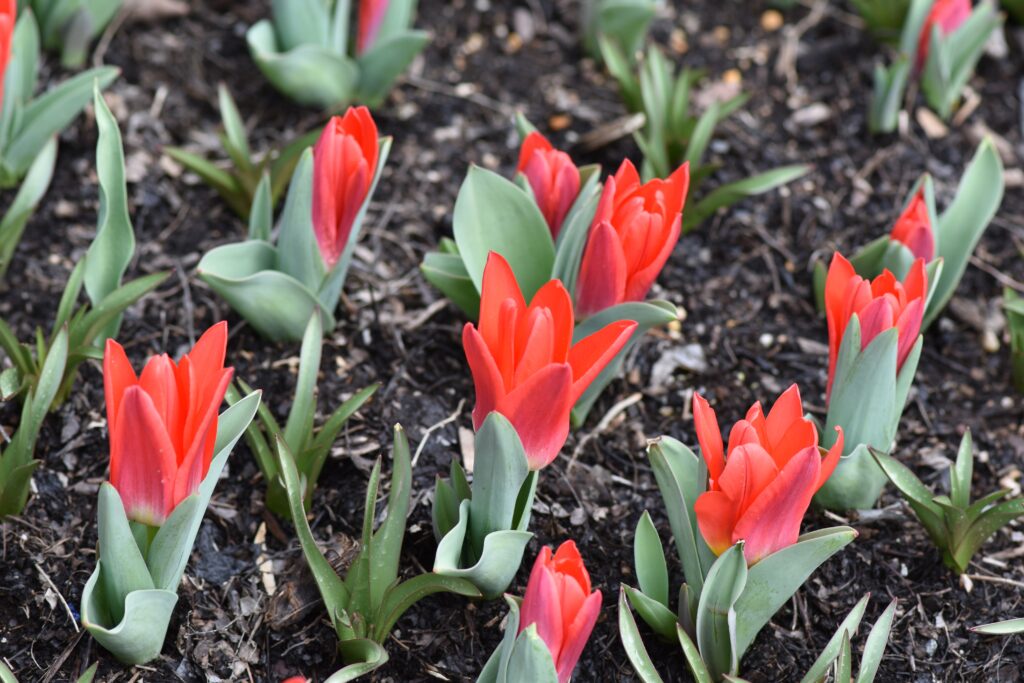
Small early bloomers are also well suited to lawns because they grow about the same height as the grass. Their foliage conveniently browns and ripens right about the time a first mowing is necessary, though you’ll probably have to let the grass get fairly long before you can cut it. The foliage on nearly all bulbs must be allowed to brown thoroughly before removing, because it replenishes the bulb for next year.
Larger, later bulbs, such as daffodils, don’t ripen until the grass is quite high – which isn’t good for the grass and doesn’t give the neat look many homeowners want.
One thing to keep in mind when planting: if the turf is very thick and very healthy, it may hinder the spread of some bulbs by acting as a living mulch.
Under trees
Bulbs naturalize just about anywhere. A classic combo is spring-blooming bulbs under deciduous trees, particularly in woodland areas. In smaller yards, this might be under a large tree. The bulbs bloom before the trees leaf out, so they have plenty of sun while actively growing. If your trees have shallow root systems, plant some of the smaller bulbs, which seldom need to be planted more than 10 cm (4 inches) deep and often can be planted as shallowly as 5 cm (2 inches). You can put small bulbs under crape myrtles, magnolias, and dogwoods, as well as under tall flowering shrubs.
Other places.
Fields and meadows are a traditional place to naturalize bulbs. Most bulbs are natives of mountainous areas with arid summers, so it’s critical that any meadow or open grassland isn’t too soggy and that you don’t plant in moist, low-lying areas. Bulbs require excellent drainage and can easily rot in wet summer or autumn conditions.
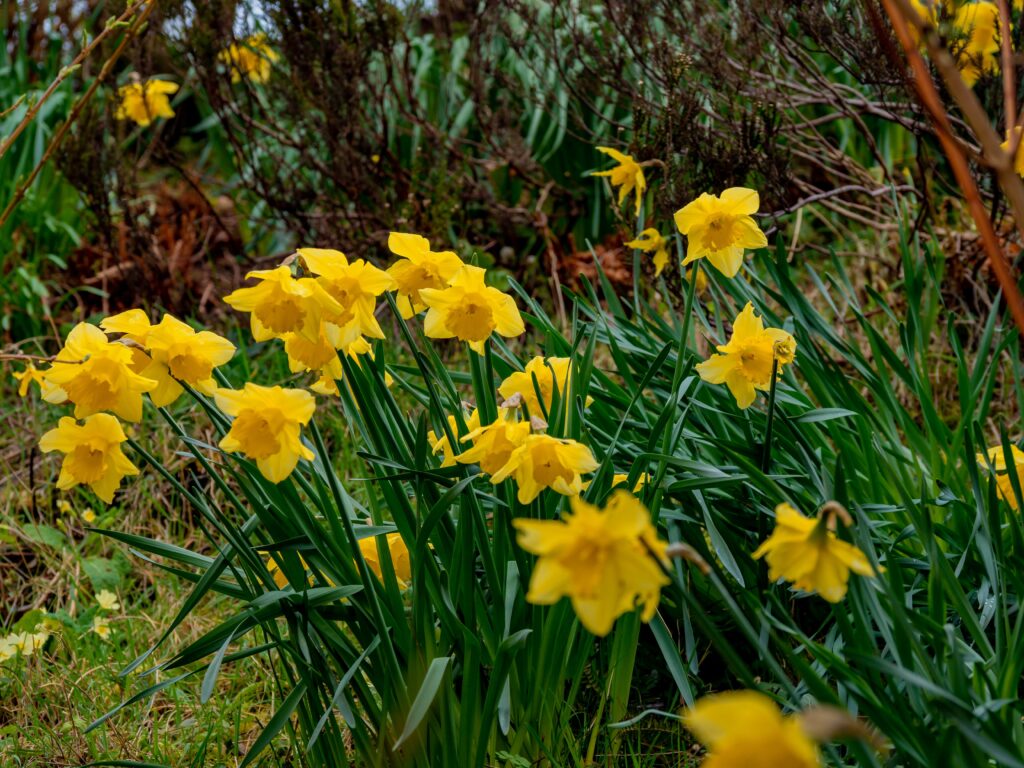
Because drainage is so important, slopes and rock gardens are other ideal places for naturalizing. This makes them an unconventional but beautiful addition to drought-tolerant prairie plantings as well. They also love sandy and gritty soils.
Still, there are exceptions to every rule. Camassia, a North American native of marshes and bogs, has beautiful blue flowers and naturalizes well in wet conditions, even those with heavy clay, including areas along creeks and ponds.
Which bulbs for you?
Which bulbs will naturalize best for you depends on your climate. Snowdrops (Galanthus spp.) will spread readily in northern latitudes but don’t receive enough of a chill to bloom even once in the torrid south. And bugle lilies (Watsonia spp.) form ever-larger clumps in Southern California but wouldn’t make it through a winter in Colorado. In regions that get a sufficient winter chill (at least as low as -7°C / 20°F), daffodils are far and away the most popular choice for naturalizing.
But those versatile small bulbs are excellent choices as well. Try snowdrops, snowflakes (Leucojum spp.), grape hyacinths (Muscari spp.), winter aconites (Eranthis spp.), crocuses, glories of the snow (Chionodoxa spp.), Grecian windflower (Anemone blanda), striped squill (Puschkinia scilloides), and scillas (Scilla spp.).
In warmer regions, bulbs that northern gardeners can grow only by lifting and storing for the winter often spread beautifully: tritonias, corn lilies (Ixia spp.), harlequin flowers (Sparaxis spp.), and freesias.
The one bulb that rarely naturalizes in any climate is the tulip. Most don’t stick around for more than two or three years. However, some of the so-called species tulips – the tulips closest to their wild ancestors – will multiply in ideal conditions. One of the most likely to succeed is the lady tulip (Tulipa clusiana). Tulipa tarda, sometimes sold as Tulipa dasystemon, also usually naturalizes well as long as winters are cold.
When looking for bulbs that naturalize, also check the packaging or catalog description. It may be mentioned there. But don’t confuse naturalizing with perennializing. Perennializing means bulbs will return for at least three years. Naturalizing means they return each year and also multiply.
Planting Basics
Planting bulbs for naturalizing doesn’t vary much from planting bulbs elsewhere except that you’ll be working around other elements: turf, roots, existing plants.
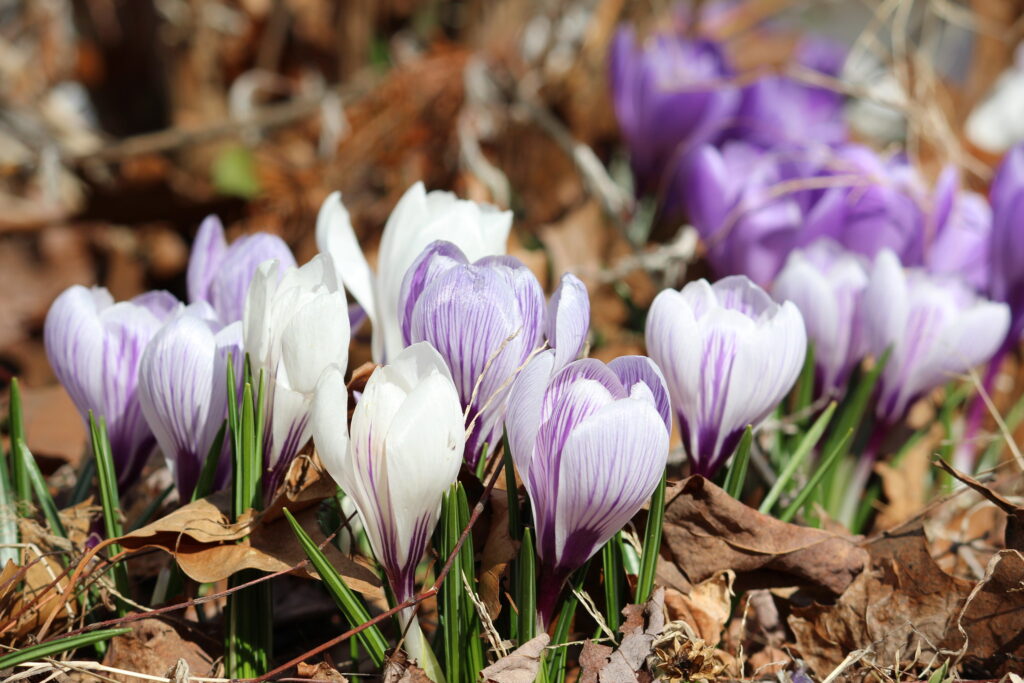
The terrain
If your site is riddled with tree roots, it’s a good idea to stick to small bulbs that don’t have to be planted more than 5 to 10 cm (2 to 4 inches) deep. These include the smaller ornamental onions (Allium spp.), anemones, snowflakes, glories-of-the-snow, crocuses, winter aconites, dog’s-tooth violets (Erythronium spp.), snowdrops, striped squill, scillas, grape hyacinths, Spanish bluebells, and crocosmias.
When planting bulbs in a lawn, there are two ways to proceed. One is to peel off the turf with a flat-edged spade and then plant underneath. As long as the turf is not allowed to dry out completely, it will reestablish itself.
The other way is to punch holes in the turf and plant bulbs individually. This disturbs the turf less but can make planting more difficult since you have to hack through grass.
Feeding
It’s always a good idea to work in some compost at planting time if possible, but bulbs suited to spreading should be able to cope with the existing soil on their own. Still, the looser the soil the better, so if it’s easy to add compost, do it.
Gardeners today advise against adding bonemeal. This animal by-product is now processed differently than it was decades ago, and the new process removes many of the nutrients valuable for bulbs. Besides, bonemeal can attract wildlife that will dig up or devour the bulbs.
Planting
Generally, you need to plant bulbs, in shade or full sun, before your area’s first hard frost. Well-drained soil is the crucial factor, along with choosing bulbs appropriate for your area for naturalizing. Find sites for them that showcase their wild charms, and enjoy a spring-after-spring celebration of natural gardening at its colorful best.
Wherever you decide to plant your bulbs, the experts agree that it’s important to get the best bang for your buck by planting en masse: you want enough of a concentration that it’s showy. With small bulbs, plant at least 50; with larger bulbs, a couple dozen. Mail order companies often offer discounts on bulbs ordered in large quantities.
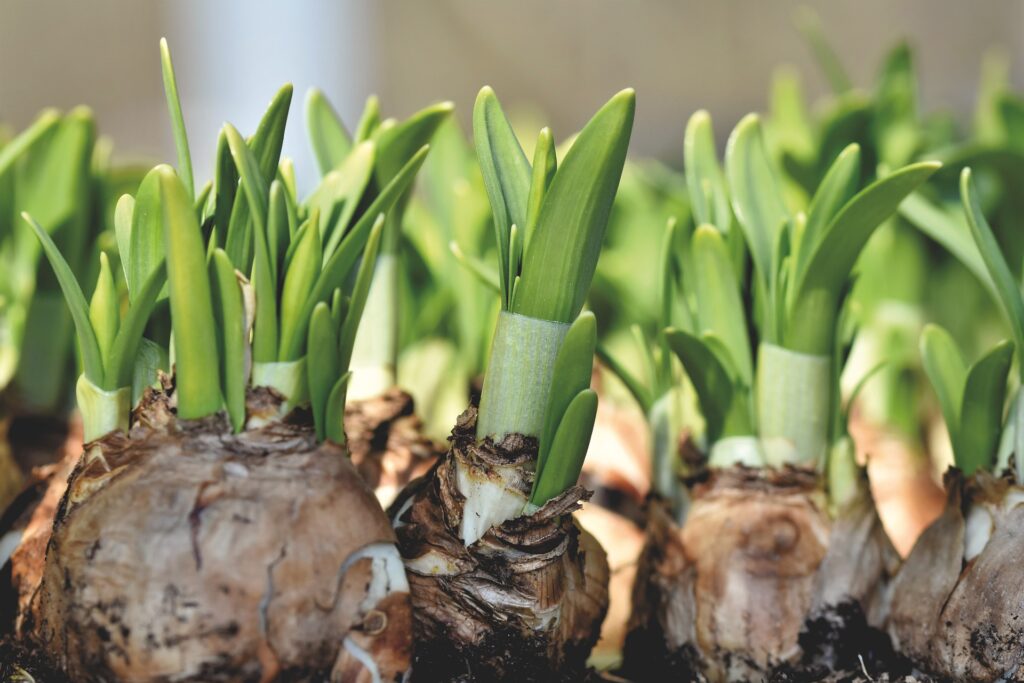
And no planting in soldier-straight rows, either. This is naturalizing, after all. Plant in large, tapering drifts. Or simply toss the bulbs on the ground and plant them where they land.
The best thing is, once established, naturalized bulbs completely fend for themselves. These are no-care plantings, and the rewards of your effort will pay off for decades. Plant bulbs in the right spot and they’ll spread into ever-widening pools of beauty.